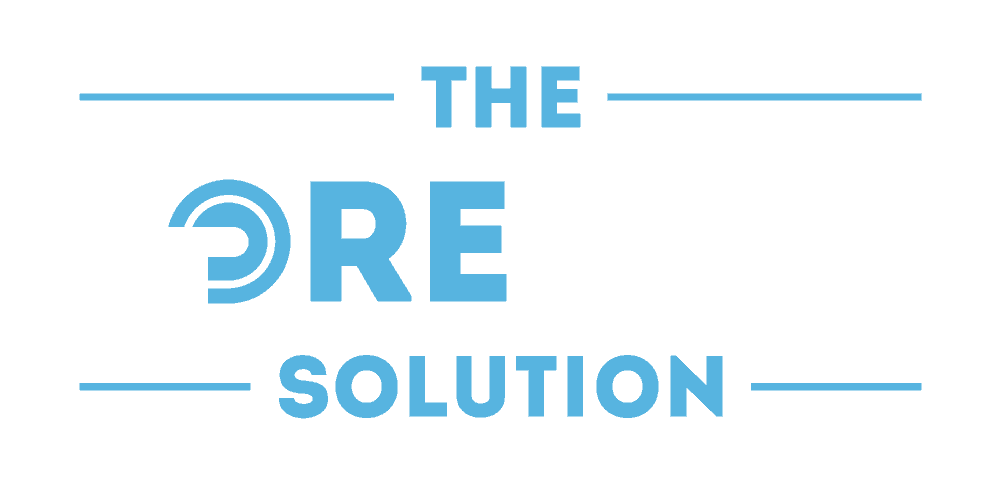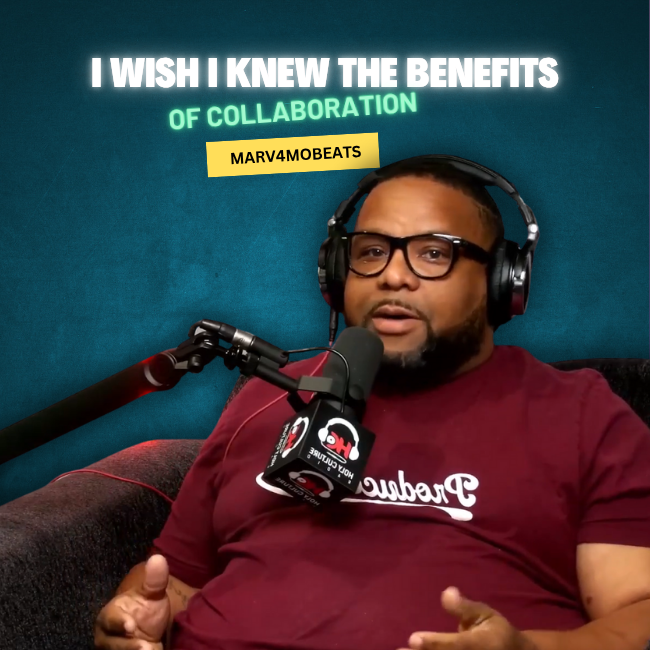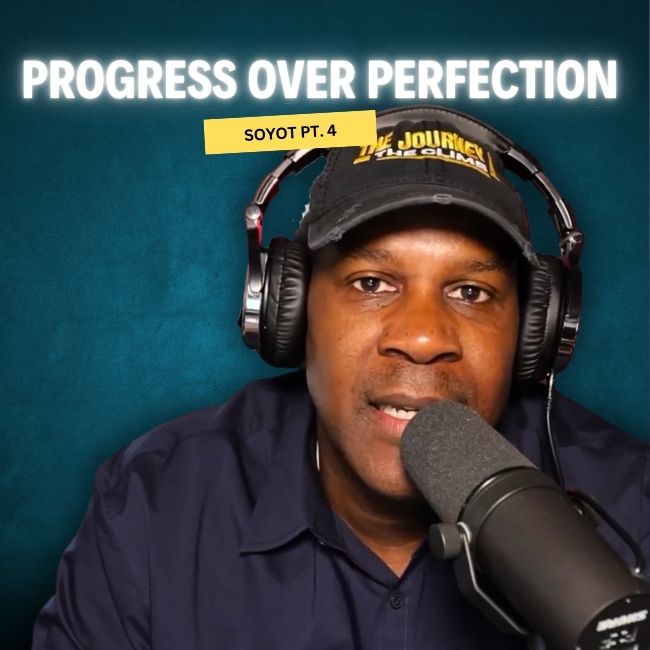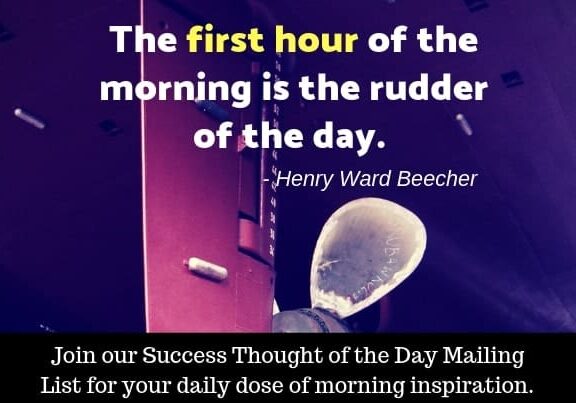Episode 51: Eight Unbreakable Rules for Business Start-up Success with Sean Castrina
Subscribe: iTunes | IHeartRadio | Spotify | Stitcher
Owning a small business can be personally and finally rewarding. However, 90% of start-ups fail within the first three-years. Sean Castrina has nearly inverted that achieving an 85% success rate. During this episode, you will learn Sean’s Eight Unbreakable Rules for Business Start-up Success.
Sean Castrina is an entrepreneur with over twenty companies under his belt and at least one more being added each year. He is an accomplished financial writer and best-selling author, having written the titles “The World’s Greatest Business Plan: That Actually Works,” “The Greatest Entrepreneur in the World,” and the “8 Unbreakable Rules for Business Start-Up Success.” He has written for several notable publications, including Forbes and Yahoo Finance, and has held events alongside the likes of Tony Robbins and John Maxwell. Sean also hosts his own podcast, called the “10 Minute Entrepreneur Podcast.”
How has he succeeded in his ventures where others have failed? Simply put, he says to look at the data and to create systems. He analyzes why businesses have failed and tries to see what he can do better. Sean also believes establishing a solid business plan and having that thoroughly vetted are essential to get started.
Entrepreneurship doesn’t have to be something you do all alone. According to Sean, “One plus one equals done.” Partnering is an essential tool for your business arsenal. Whether they’re full-time or only hop on board for specific projects, a reliable partner is just what you need to fill in any oversights and help you see your plan to execute.
The road to entrepreneurship is challenging and will require a keen mindset, some investment, and for some, even the juggling of regular work alongside your business goals. But Sean summarizes his journey and what has worked for him over twenty times over in his eight unbreakable rules.
- Act like an entrepreneur.
No procrastination or laziness. If you want to be a successful entrepreneur, you need to think and act like one. Hone the qualities and skills of someone ready to succeed.
- Formulate a business plan.
You need a comprehensive and thorough business plan that will target all the points you need before moving to the next phase. As Sean emphasizes, beta testing is key for qualifying your idea.
- Put your plan together.
Make sure you’ve answered all your questions in your plan – What’s your target market? Who is your competition? What will your starting costs be? Then, string everything together for a foolproof and reliable business model.
- Protect your business.
Leap through whatever legal and intellectual property hurdles you need to to ensure your business, as well as you and your partners, will be safeguarded.
- Build a strong team.
No business or business owner can succeed without the right people ready to support you.
- Market your business.
A good marketing plan is a must. Don’t rely on word of mouth.
- Know your numbers.
Don’t rely on accountants or assistants to memorize your numbers for you. Make sure you know all the goings-on around your offices each and every day.
- Learn, learn, learn.
Whether through online courses, podcasts, books, or fellow entrepreneurs, Sean says you’re never too far in your career to be a learner.
Key Discussion Points
0:00 Introductions
01:15 What people don’t know about Sean
03:10 The State of Small Business
04:10 Why Most Small businesses fail
09:00 Sean’s experience with his twenty businesses
14:15 Is now the time to start a business
15:00 Can you enter a business part-time?
16:45 The Eight unbreakable rules
Visit Sean Castrina
Email: sean@seancastrina.com
Website: www.seancastrina.com
Facebook: https://www.facebook.com/seancastrinapage
Twitter: https://twitter.com/SeanCastrina
YouTube: https://www.youtube.com/channel/UC2DX7lLt3zS37jtDELR3rRw
Stay in touch!
Facebook: https://www.facebook.com/jamesrosseausr/
Instagram: https://www.instagram.com/jamesrosseausr/
Linkedin: https://www.linkedin.com/in/jamesrosseausr/
Twitter: https://twitter.com/JamesRosseauSr
Full Transcript
Have you been thinking about starting your own business? My next guest, Sean Castrina, is a serial entrepreneur who has started more than twenty companies over the last twenty years and still seeks to launch a new venture annually. He’s a best-selling author, having written three books, including “8 Unbreakable Rules for Business Start-Up Success,” “The Greatest Entrepreneur in the World,” and his most recent book, “The World’s Greatest Business Plan: That Actually Works.” He has contributed articles to Forbes, Money Magazine, Inc., Yahoo Finance, and countless others. He has guest lectured at some of America’s finest colleges on entrepreneurship and has shared events with Tony Robbins, John Gordon, John Maxwell, and numerous others. He is also a host of the “10 Minute Entrepreneur Podcast,” which has been a top business podcast on iTunes.
So please help me join and welcome Sean Castrina to The Corelink Solution. Welcome, Sean.
Sean: Hey, great to be on the podcast.
James: Hey, thanks for joining us. So I like to help my audience always get to know people personally before we jump into the topic. What’s one thing that you might share that people who believe they know Sean best don’t know about you?
Sean: Okay, what they don’t know is my twenties was a trainwreck [laughs]. I lost my dream job, went bankrupt. So what I think people think is that people that are successful, it naturally goes that way. It’s not necessarily the case.
James: Absolutely.
Sean: You trip, you fall, you take some notes. You figure out what you did wrong, what you need to do differently, and then do it.
James: Absolutely. And what was the dream job, if I can ask?
Sean: Yeah, I worked for a nonprofit out of college making great money. I met my wife there. Bought a brand new house, had a brand new child. I had the whole Norman Rockwell thing going on. And then they had a change in leadership pretty much overnight and goodbye.
James: And how bad was the trainwreck? Because this could be instructive to—
Sean: Oh, no, it was mass. It was a complete train wreck. That was train wreck A, and then going through a financial crash. And I moved to where I live now in Central Virginia with $1,000. And the rent— I remember— I’m an optimist. I did a lease with an option to buy with no money. I still had a caveat in my agreement that I could buy the house in 18 months.
James: Wow.
Sean: And that, at a fixed rate, we had to apply a portion of the rent. It’s funny, because later, he ended up going to the church I go to. And he goes, “I never thought you could buy my house.”
James: Wow.
Sean: And four days before the eighteen months was over, I purchased his house from him. And he said, “I never saw that coming.”
James: But you did.
Sean: Yeah, so you can get back up.
James: You can get back up. When I heard your story, twenty ventures over twenty years and still doing one annually, that takes a lot of something, right, and we’re going to figure out what that something is during the course of this conversation. But one thing surely is stamina. And before we jump into the topic, I just want to kind of set the stage a little bit. We talked about entrepreneurship a few episodes ago, and one of the things we talked about was mindset preparation for entrepreneurship. And today, I think we’re gonna go into a lot more of the strategies and tactics that Sean’s unpacked through his experience. But one of the things for people thinking about this— small businesses are defined by the SBA, companies of 500 employees or less. And one of the things that you should stick in the top of your mind is the success rate is usually 10%. So 90% failure rate typically, right, that happens over—
Sean: I would say you have a better chance of getting a doctorate degree.
James: Yeah, exactly. Exactly. And that rate hasn’t changed. I looked at these rates years ago as I lead teams at Allstate Insurance Company, helping new Allstate agents get started, as I lead teams at other places. Because you’re always trying to talk to the entrepreneur about, look, they’re putting their money in to get going. And whether it’s a franchise or anything else, right, there’s a tremendous amount of risk. And some people are using home equity, borrowing money from family members. And so, you want to be having an informed conversation with them, right. So, Sean, help me understand this. Doing twenty businesses over twenty years, what have you figured out? And maybe here’s a good place to start with a little bit of pressure testing.
Sean: Yeah.
James: Are you special, or have you figured out a system that can help others really succeed?
Sean: Systems make average people special. So let me take what you said. And, yeah, I’m a systematic person in that you got to create— I have systems that make things repeatable.
James: Yeah.
Sean: And I think in starting a business, I looked at why they don’t succeed.
James: Yes.
Sean: If you look at statistics in anything, and you realize, well, when we run the ball to the left, we get two yards of carry. But when we run it to the right with a pulling running back, we get 5.6. Hey, guess what? We’re gonna run it to the right three out of four times.
James: That’s right.
Sean: You just got to look at the data sometimes.
James: That’s right.
Sean: And so I think in entrepreneurship, I look at why they fail, and I think— I always say, the three big reasons why they fail, first is that the entrepreneur doesn’t vet the idea. He doesn’t open it up to real criticism. Brings it to family members. They either want it to fail or tell him, “You’re the greatest in the world, Johnny. You’re going to do so good, I can’t wait to see it.” You got to vet the idea through and/or a business plan, criticism. Because when it gets to the marketplace, the marketplace is going to hit it and hit it hard. And if it’s not good, it will not stand up. It will fall in the 90%. The second thing is that most entrepreneurs don’t have a strategy on how they’re actually going to acquire customers and sell to them. They have wishful thinking. They’re confident people will buy it. But there’s no, “This is what I’m going to do, I’ve beta tested that, this works, this attracts customers in masses.” So they don’t really have that figured out. And then the third, they hire horribly. They hire family and friends. And they don’t hire people that move the needle. So they’re like the three big that, if I’m consulting with somebody, that’s the three I want to immediately make sure—
James: Yeah, yeah. Now, when you talk about a system— because I’m a huge fan of systems of success— how do you think about the people who’ve used this and succeeded with the system? How have those rates changed from 90% failure rate and 10% success to— what does that look like when using your system?
Sean: Yeah, I think number one is, if you eliminate—I don’t know what the statistics are. I know that I’ve only had less than 15% of my businesses fail. So I’ve started more than twenty, and I’ve launched three in the last two years, and all of them have succeeded. So, I just know that if you do the three mistakes that I just made, I know you’re not going to be around.
James: Sure.
Sean: Statistically, if you have not vetted your idea and you don’t know— you have no data to prove that the marketplace is going to be receptive, well, I know that you just cut your chances in half, 50%, just right out of the gate. Second, I know if you don’t have a method to attract customers, you’re going to be
out of business. And third, I know if you don’t know how to sell to people you attract, you’re going to be out of business. So I’ve only gone over two things—
James: Yeah.
Sean: —of my big three. And you can see where those— well, if you have those in place, you get to see the odds more in your favor.
James: Okay.
Sean: All right.
James: When did you decide to codify this system, if you will, and kind of put this in place and developed a program? I’ve seen you have some online community and people you engage in this program. What made you decide to do it, and when did you do that?
Sean: Yeah, about ten years ago— I do a big beach vacation with my roommates from college, and I take their families, and it’s like 25 of us. And I rent a house on the beach, and we hang out for a week. And I was sitting there, and I had a legal pad, and I was just writing notes, one-sentence notes on why things I did had worked and what didn’t work. It’d be like, fire immediately. If you’re going to fire somebody, fire immediately. I wrote, like, “If you don’t put money in reserves, you’re only an employee.” Until I started putting money away in my businesses, I was an employee. I really didn’t feel like I was running a business. So I wrote about a hundred of those, just sentences.
James: Yeah.
Sean: And then I broke them up into what became my first book, the “8 Unbreakable Rules for Business Start-Up Success.” And so those rules kind of have defined everything going forward on what I think— that there are certain pillars, they don’t change. It’s like, football changes in that you may do more of one thing than the other, but you still run, pass, tackle.
James: Absolutely. Right, and you may change the proportions. But, yeah.
Sean: Exactly. Yeah, the execution and how you use them. But the basic tools are still the same.
James: Yeah. Now, to your point of 15% failure rate— so you’ve basically flipped the regular stats, right? Which is tremendous. When did you begin tracking those stats? And talk a little bit about those who have entered your program that may be too new to know, with those of any program. Are they experiencing similar?
Sean: Yeah. It’s not people so much as— because we’ve just started— I’m so specific about— to this day, I’ve never sold a course, because I—
James: Oh, okay.
Sean: And there’s a reason. I think in regards to entrepreneurship— I’m working on one in the next couple of weeks; we’re vetting it. But I’ve told people— and this is how I feel— I am never going to look at you and tell you that I can guarantee you succeed. I can tell you what works statistically and what will keep you from failing. But if you’re lazy and you can’t attract the team, and you’re cheap, and you don’t reinvest in your company, and you procrastinate, I don’t know what you’re doing outside of my course. And so, I’ve always had a hard time with that, where I’m like, I’m never going to be the person who says, “I’ve got a guarantee you’ll make a million.” No, I have no idea. You could be a total schmuck.
James: Right. Right.
Sean: I can’t create a schmuck-proof course.
James: Right. To me, it’s like a fitness trainer, right?
Sean: Exactly.
James: I don’t know, after the training, what you’re going to consume.
Sean: No, exactly. If we get done, and you go home and have a chocolate shake, everything we did up to that is a moot point. So what I do know is I’m working on things that I know work that will definitely make your business better. My superpower is partnering in business.
James: Okay.
Sean: That is the thing that I do better than anything I do— other than I’m pretty good at marketing. And through my businesses over twenty-five years, what I have done in every single one of them, every one of them I’ve partnered, my philosophy is one plus one equals done. You take me with what I do real well, and you let me put it with someone who has the complete opposite, can fill that massive gap. There’s always a need that I have, whether it’s expertise, whether I don’t have time to do it, whether they have
an understanding of the industry better, manufacturing— whatever the case may be. So my philosophy has always been one plus one equals done. And I think, in general, if I can, A, through my business plan, shows you how to do a quick, efficient business plan that vets your idea. So at least when we move forward, we’ve gotten rid of the ugly five that are going to put you out of business. The easy ones. So we get you past there. So this is how I view it. In phase one, we test your idea. We run it through a business plan so that we’ve eliminated the obvious mistakes, the things that are going to absolutely put you out of business. We get it there. So we take it from A, we move it over now. It’s sitting in front of you. The next stage is, how do we execute and get this thing actually launched? I’ve never taken more than thirty days to launch a business once I’ve had a business [group? 12:07]. Thirty days is my rule. You can make it up to six months, I guess. But I know after six months, you’re never gonna do it.
James: Yeah.
Sean: You’re gonna find another reason not to do it. So in my “World’s Greatest Business Plan” book, I put on how you can execute this in thirty days. What you should do every day, and it’s up. Of course, there’s always some outlier companies that are of such magnitude in the beginning regarding venture capital. But again, I deal with most small businesses under 500 employees. So barring the huge outlier, this applies to most people. So we execute the company, we get it up. Typically from execution to at least trying to scale it, I find partnering is the thing that you need, whether it’s a full partner in the partnership, or it’s partnering with somebody where you give them a little bit of stake in the game. And it would be like Sandberg with Mark Zuckerberg. She showed him how to make money. She showed how to monetize it. In McDonald’s, everybody looks at what Ray Kroc did. Ray Kroc, they weren’t making any money. I forgot the gentleman’s name, but he partnered with somebody who developed the real estate end of it.
James: Yeah.
Sean: McDonald’s is the largest landholder other than the Vatican.
James: Yes.
Sean: McDonald’s owns more land than any single entity other than the Vatican.
James: Wow. Yeah.
Sean: Other than a country, of course. So he decided, well, why don’t you own the land under all the— when you buy a franchise, you buy the name. They own the land. They got a renter.
James: Yes.
Sean: It’s a brilliant model. So if you look at all these businesses, whether they partnered on the front end like a Steve Jobs and Wozniak and Bill Gates and Paul Allen, or getting it off the ground— you brought in somebody who was your right-hand person to help you where you lacked. And I think that’s what great entrepreneurs do. They either do it on the very front end, or they do it very early on. They partner with someone.
James: Yeah. And those complementary skill sets to your point. I love your phrase “one plus one equals done.” It’s so good.
Sean: My next book. I just finished the manuscript.
James: Is that right? No, it’s releasing in September, right?
Sean: Yeah. Yeah, it’s going to be my 2021 book, “One Plus One Equals Done.”
James: One of the things you said takes me to a question I was thinking about your point around, you can get there in 30 days, some may take longer, right, and you have a daily task list for them to execute. Given where we are right now in this moment, right, I think it’s almost inconceivable that many people don’t think about starting a business.
Sean: I think it’s gonna be the greatest entrepreneurial surge!
James: Yeah, that and new babies, right?
Sean: Yeah, it’s gonna happen. And I want to be humble about this. I’m not saying now, based on a global pandemic, I don’t think now is necessarily the time to start a restaurant or a gym, per se. I mean, there are some businesses that would be an uphill battle. But this is going to pass like everything passes.
James: Sure.
Sean: And you need to put yourself in position. This is the perfect time to do a business plan, to really vet an idea and start maybe beta testing some things.
James: Yeah. So talk about that point, right. Because I think this is a good point for people of how to turn the dial. And when you’re entering a business, I think a lot of people struggle with, how do I enter part-time? And is that doable, or do I have to take the polar bear plunge, so to speak?
Sean: Yeah. One of my myths that I tell about why people don’t start a business— number one, they think they need a ton of capital. Number two is they think they need to quit their job. I have never, to this day, have ever quit a job to start a business. I didn’t do it on my first business, I didn’t do it on my second business, I didn’t do it on my third. Okay, I didn’t. There’s 168 hours in a week. I had a mortgage and a child.
James: Sure.
Sean: And I don’t think just because you have an idea— quitting your job is a privilege, not a right. Let me say that again. Quitting your job is a privilege. You earn that through your company generating a profit. That is your incentive. So when you start making money, well then, have at it.
James: Yeah.
Sean: But I say until your company can peel off 50% of what you’re making and you’ve seen that happen over three months, then you do that. But I’m not a big fan of quitting your job. I think a little perseverance test, a little stress test in your life builds some character.
James: Yeah, no, to me, it reminds me of going back to school at night, right. I did both my undergrad and my MBA at night, right.
Sean: I did my grad at night, too. Yeah, you go to that six o’clock class tired. 6:30, everybody’s looking at each other. You’re walking out at 9:00. You did it.
James: Do what you have to do. So one of the things I’d love to do— we can’t go through all of them, obviously, and I think I know which ones you’ll hit on. But when you think about the Eight Unbreakable Rules, if we could hit on three or four, which ones would you go to?
Sean: All right, I can go through these so fast. I’ll give them to you in three minutes. You ready?
James: Okay, excellent.
Sean: First one: you got to be a great entrepreneur. Remember I talked about I could give you the idea for Google, and you’re still going to screw it up. I can give you a great idea, but if you’re lazy, you lack leadership skills, you can’t recruit anybody, all those things, you can’t take action on things, you procrastinate— regardless, you’re not going to succeed. So you got to be a great entrepreneur. You got to develop the skills of successful people. Number one. Number two: do a business plan. You got to vet your business idea. You got to test it. Who’s your competition? What do they charge? What do they do that you’re going to do differently? What’s your unique selling proposition? How are you going to attract customers? What are your costs to start it and then keep it ongoing? You got to qualify the idea. And number three is, now you put together your plan. Once you get all your information— well, my competition charges this, well, I’m going to do that. My competition markets this way, I’m going to do that. Then you put an actual strategy in place. You watch the film— number two, you know? Then number three, you put together the plan.
James: Right.
Sean: Number four: you protect yourself and your business. You get it incorporated. Use a payroll service. I don’t think any small business owner should be in there doing their own payroll and taxes. Nine out of ten times, it could lead to something not good. So I like doing that. If you’re gonna have a partnership, have an attorney do a simple partnership agreement. Worst case scenario, have their paralegal do it. Just write the critical terms that you all have agreed on.
James: Yeah.
Sean: Something simple. Worst case scenario, notarize it. Do your intellectual property— patents, trademarks, copyrights. If you have something valuable, do that. Five: build a successful team.
James: Let me stop you one second.
Sean: Yeah.
James: I love that you’re running through these.
Sean: Yeah, I could run through these, baby.
James: This is really important. The beta testing, is that in step two?
Sean: Yeah, absolutely. That’s where you’re qualifying your idea.
James: Yeah. Say more about methods of beta testing, because I think this is a big one that many people go over right there. Pull back the long slingshot, I call it, right, on their idea. They got it all written down. It looks beautiful in the plan. And then they go to launch it, and it’s like, poof, right. Small poof. Because there was no beta testing whatsoever, besides talking to friends and family. Talk about methods of beta testing that you’ve seen be successful.
Sean: Okay. I’ve done this, okay. I’ll do it in old school business, and I’ll do it in new school, because I’ve done it both ways. All right, I own a construction company that’s eight divisions, and we’re always looking for areas within sixty miles of our hub that we can service. Let’s say I want to start a deck division that builds decks and does Trex and all that kind of stuff. Very lucrative in Virginia to have that. Everybody has a porch or a deck in Virginia. It’s like printing money. I go to another city sixty miles away. Now the demographics look similar to our city, because I’m going to look at the demographic homeowners’ average income. So I’m going to do some due diligence. I don’t go down there, I don’t buy two vans, an office, and start buying everything to launch this division. What do I do? I go and buy five thousand postcards. I buy a local phone number that gets forwarded to my office. So I pay $30 for that phone number. I don’t have an office there. I don’t have a van there. I don’t have anything. If the phone rings, I’m going to quickly scale it in fourteen days.
James: Gotcha.
Sean: I’m going to go out and do the estimates. I’ll go buy a van. Maybe we’ll borrow one from a local city. But I’m going to beta test it first. I found this— the easy problem is solving demand. That’s the greatest problem. “Sean, we had a hundred phone calls today.” I love that problem. The problem I don’t want is crickets.
James: Right.
Sean: I got two vans, an office. I’ve hired two employees. I don’t get any calls. So that would be a traditional beta test. Second, if you do it online— for example, let’s say I was going to do a course. Well, I’m going to beta test titles pre-sell. I’m going to offer, “This is a course. We got it for $29.97.” It goes dormant, I don’t hear anything— I’m not doing it. I can do a course in a week.
James: Right, you can give them the title, you can give them the synopsis or whatever, the course layout. But you don’t have to record the whole course and whatnot.
Sean: Exactly. I don’t have to create the entire course.. I could tease with the title and summary and say we had so much demand that I want to add some new value content. We’re not gonna charge you. We’re gonna charge you in ten days. But you can always work back from demand.
James: Right.
Sean: You can’t fix no sales.
James: Love that.
Sean: — nobody interested.
James: Yep. Love that. Love that. Okay, sorry, I cut you off. Keep going.
Sean: Oh, no, man. I’m like a machine gun.
James: So many people fail on that part.
Sean: Number five: you got to build a successful team. There you go. Partner with good people, hire good people. You’re going to be as good as the people who toil with you. So build a team. Number six: marketing is not optional. You are not a word-of-mouth business, okay? It does not exist. “Oh, Costco doesn’t advertise.” No, they just spent about millions of dollars in public relations to tell you they don’t advertise it, which is advertising. They just do it in reverse.
James: Say more about that too, right. Because this is another one, I think people believe, that posts here and there is going to do it. A tweet here and there, right? Talk about it however you think about it. I’m on a board of a company. I’ve had major marketing budgets. So I don’t want use numbers, but I tend to think of marketing budget as a percentage of overall revenue.
Sean: I agree with you.
James: How do you think about it for a smaller business?
Sean: What is the salary of a great employee? Budget that to attract customers. If you just think of the logic there, you’re going to hire all these— I’m going to hire somebody to answer the phone and have this. But you’re not willing to put one person’s salary in vehicles to make your phone ring.
James: Right.
Sean: To make your website light up. So whatever that— is that $40,000, is it $60,000? I don’t know, but start with that. Because if you’re not committed to that, I just don’t see how you succeed. Marketing point blank is not optional. Businesses go out of business for one reason 99.9% of the time, barring a death and nobody taking it over. Barring that, they go out of business because they don’t make enough sales. And they go out of business because they don’t make enough sales because they don’t attract enough customers. Sears, JCPenney, Kmart cannot attract enough customers. So they can’t make enough sales, they go out of business. So to not have that as a core business principle of yours, that’s a huge mistake. So number six. Number seven: know your numbers. I’m like a savant with costs.
James: [laughs]
Sean: I know what it costs per day. I know how long my people work for me. I know what I make on every single person in the building on everything we offer. I know what our margins are. I know what our costs are. I know what debt is. I know what we’re leveraging. I get an Excel spreadsheet every single day of my breathing life that shows me every business. I can look in five minutes and see a bad trend, a good trend, something I might need to be alarmed about every day. Know your numbers. If you meet with your accountant every three months to find out how your business is doing, you will be one of the nine in ten that go out of business.
James: Absolutely.
Sean: Just know that. And then number eight— listen, I always say, be a learner. Let me just put it that way. Be a learner. And that is a couple of things. Get mentored by somebody who has started a business. You don’t even have to pay for it. I didn’t pay for my business mentor. I knew somebody who had a reputable business and was actually a client of mine. And I went in there, I was like, “Hey, Ben, can I take you out for lunch once a month? I’ll pick you up, we’ll go right across the street. And I’m going to have just a few questions, because I’m starting this business and I’d love to just get your advice.” You do that for two out of three business owners, they love talking about their business.
James: Yeah. Oh, yeah.
Sean: Trust me, it’s going to be the lunch they look forward to the most. They’ll do it for you. Don’t waste their time. “Can I bring you a coffee? 7:30 in the morning, I’m going to bring you a coffee at Starbucks. Can I sit here for just 20 minutes?”
James: No doubt about it.
Sean: The secret is, don’t pitch them anything. Don’t ever try to get a dime off of them, ever. Their knowledge, their wisdom— don’t waste their time. Come organized, come ready. If you ask three people, you’ll have a mentor by the end of the week.
James: Absolutely.
Sean: Anybody who can help you get there further and faster. That’s what mentoring does. That’s what reading books does. That’s what taking a course does. In my course, at the end of the day, I’m trying to consolidate for you. These are the mistakes I’ve made. This is the route that gets you up the hill. If you go this way, you’re gonna avoid that tree, and there’s a dam there. That’s what a course does. I’m a tour guide that eliminates all the struggles, or tries to. Learn. Be a learner. Listen to podcasts. Like, my podcast, “10 Minutes,” I teach people about how to start and grow a business. There’s thousands and thousands of podcasts that you can learn whatever it is you’re trying to learn.
James: Absolutely.
Sean: Be a learner.
James: No, that’s so good. And it’s so funny, there was a piece around learning from someone else’s experience. Because life is a great— well, experience is a great teacher. Yeah, but wisdom is learning from someone else’s experience, right? So I don’t need to get burned to understand that the stove is hot. If you tell me and I see you wincing in pain, I’m good.
Sean: You’re gonna love this. You’re gonna love this. This is my quote in the book. Here you go. I’ve used this over and over. “Failure is best heard through a secondhand story and a hell of a lot cheaper.”
James: Yes, absolutely.
Sean: Okay, so if you tell me I did this, and it did not work, and it failed, and I lost my— I got it! The stove is hot.
James: Absolutely. Absolutely. So good. So good. Sean, these are a lot of nuggets you dropped here, and I think the audience is going to get so much out of this. I want to thank you for spending your time. I’m going to tell people to go to your site, SeanCastrina.com. You can get his three books there. You can check out his training and his program. I mean, one quote that I’m going to take away from this, one that I’m going to re-emphasize with you guys, just because I was just seeing this time and time again, is, “You can work backward from demand, the beta testing piece.” I mean, that’s just a quote. “You can work backward from demand.” So, so many ways to introduce your product through beta testing and create that demand and grow from there. So, Sean, any last words for the audience?
Sean: No, man, I love it. Thank you. Go to my website and get a free book. You can never go wrong with free. Let’s start with free.
James: Exactly. Hey, thanks so much again, Sean, for joining us.
Sean: Thank you, James.







